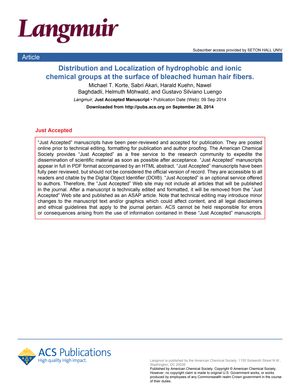Distribution and Localization of Hydrophobic and Ionic Chemical Groups at the Surface of Bleached Human Hair Fibers
October 2014
in “
Langmuir
”
dynamic Chemical Force Microscopy Fourier Transformed Infrared Spectroscopy oxidative bleaching hydrophobic top layer hydrophilic SO3 end groups cysteic acid thioester bonds fatty acids cysteine oxidation Self Assembled Monolayer nano-scale imaging ionic sites hair care products re-hydrophobization dCFM FTIR-ATR bleaching SO3 groups SAM nano-imaging hair products

TLDR Bleaching hair removes its protective top layer and exposes more hydrophilic groups, changing its chemical surface and affecting how it interacts with products.
The study utilized dynamic Chemical Force Microscopy (dCFM) and Fourier Transformed Infrared Spectroscopy (FTIR-ATR) to analyze the chemical changes in human hair cuticles after oxidative bleaching. It was found that bleaching partially removes the hydrophobic top layer of hair, exposing hydrophilic SO3 end groups with a surface density of about 2.2 molecules/nm², which is equivalent to approximately 600 µg/m² of cysteic acid. This indicates the disruption of thioester bonds and the removal of fatty acids due to cysteine oxidation. The bleached hair surface exhibited a clustered, crystal-like structuring of cysteic acid, suggesting a "Self Assembled Monolayer" alignment. The study provided nano-scale imaging of hydrophobic and ionic sites on hair and contributes to the understanding of the chemical composition of altered hair surfaces, which is important for the development of hair care products aimed at re-hydrophobization. Multiple measurements were taken across different hairs and locations to ensure statistical evidence.

